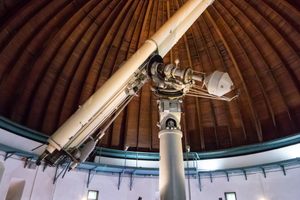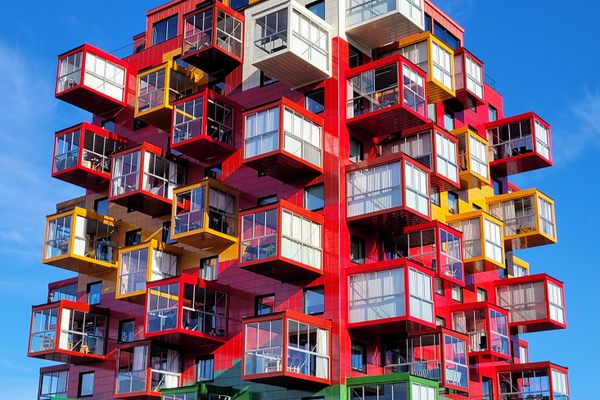About
While central Tokyo is known for its tall buildings and cutting-edge architecture, the suburban areas generally seem more down-to-earth. Given this, it's surprising to see the polychromatic Reversible Destiny Lofts Mitaka on a thoroughfare through the metropolis’s western suburbs.
Shusaku Arakawa and Madeline Gins, both founding members of the Reversible Destiny Foundation, designed these lofts. One of the foundation’s goals is to create architecture that teaches residents to “learn how not to die”, creating buildings that promote well-being and longevity. An alternate interpretation of “learn how not to die” is “reversible destiny”, thus leading to the foundation’s name and the name of the Mitaka complex.
Constructed in 2005, the Reversible Destiny Lofts consist of nine residential units. The units' exterior looks like a colorful collection of tubes, spheres, and cubes, contrasting with the neutral whites and grays of the neighboring buildings. Very colorful staircases connect the complex. Inside, the apartments have unusual shapes and bright colors. They have uneven floors, poles to assist with movement, and ceiling hooks that can be used for storage.
The overall concept of the complex is to “challenge and stimulate the senses” and present “challenging environments” to the occupants. The architects dedicated the building to Helen Keller, who was, they say, "someone able to practice ‘reversible destiny’ in her own lifetime."
The Reversible Destiny Lofts Mitaka have left their colorful mark in what would otherwise be a mundane part of outer Tokyo.
Related Tags
Know Before You Go
The Reversible Destiny Lofts Mitaka are located in Mitaka, in the western part of Tokyo, to the west of the intersection of Tokyo Metropolitan Route 14 (also named Tohachi Doro) and Tenmondai Dori. The building can easily be reached by bus from several nearby train stations, including Mitaka, Musashisakai, and Chofu Stations. It is also possible to drive to the building, but parking is only available in a few nearby lots on side streets.
Be aware that parts of the complex still function as people’s private homes, so do not enter the property without permission, although the buildings can easily be viewed from the sidewalk outside the property. Additionally, it is possible to arrange tours, and two of the apartments are available for short stays.
Hidden Japan: Sado Island, Nara & Kyoto
Explore a different side of Japan.
Book NowCommunity Contributors
Added By
Published
March 6, 2024



























